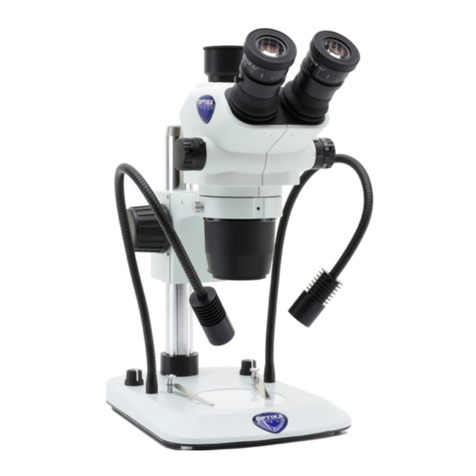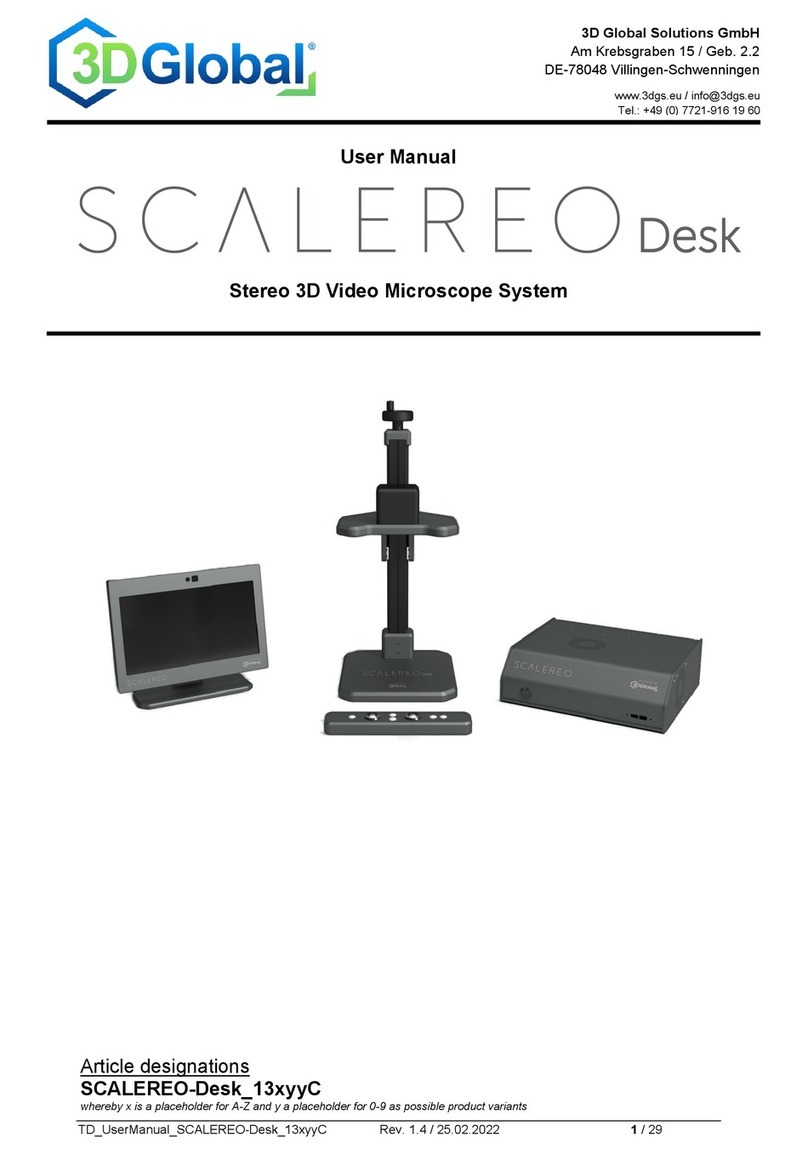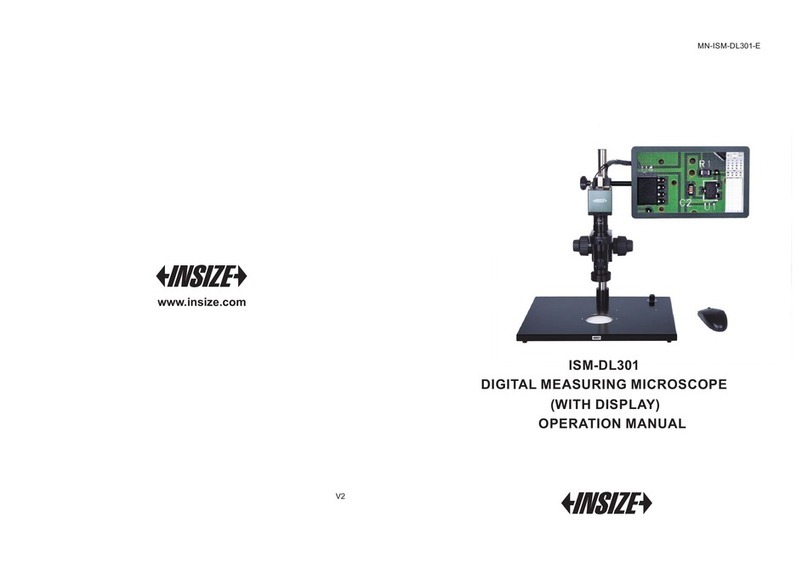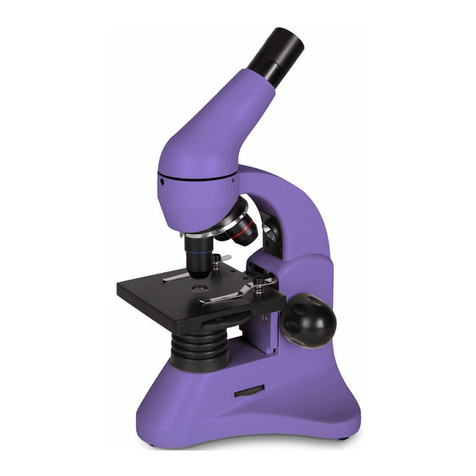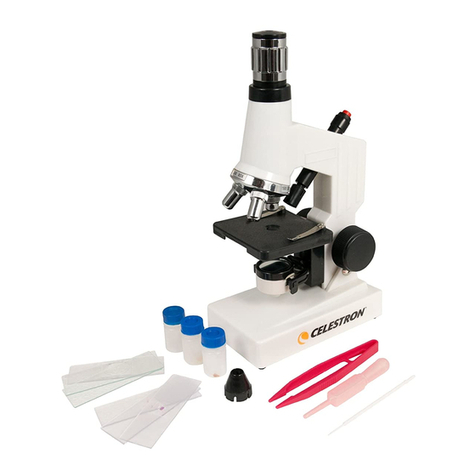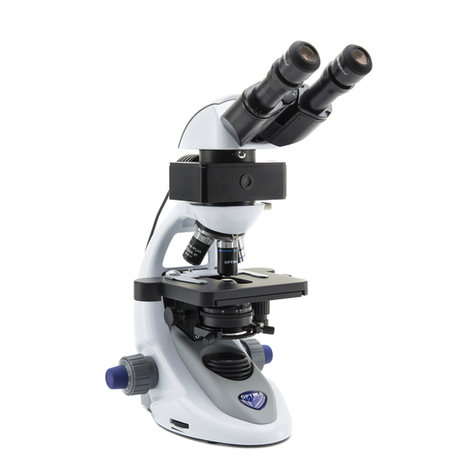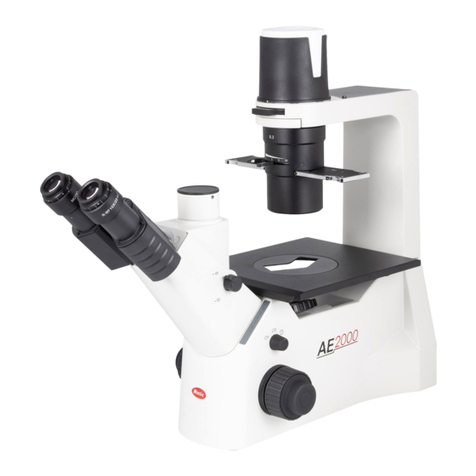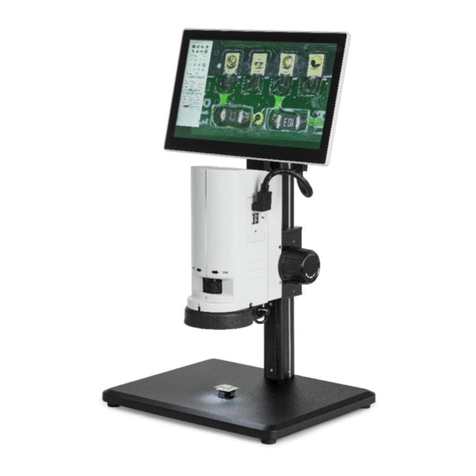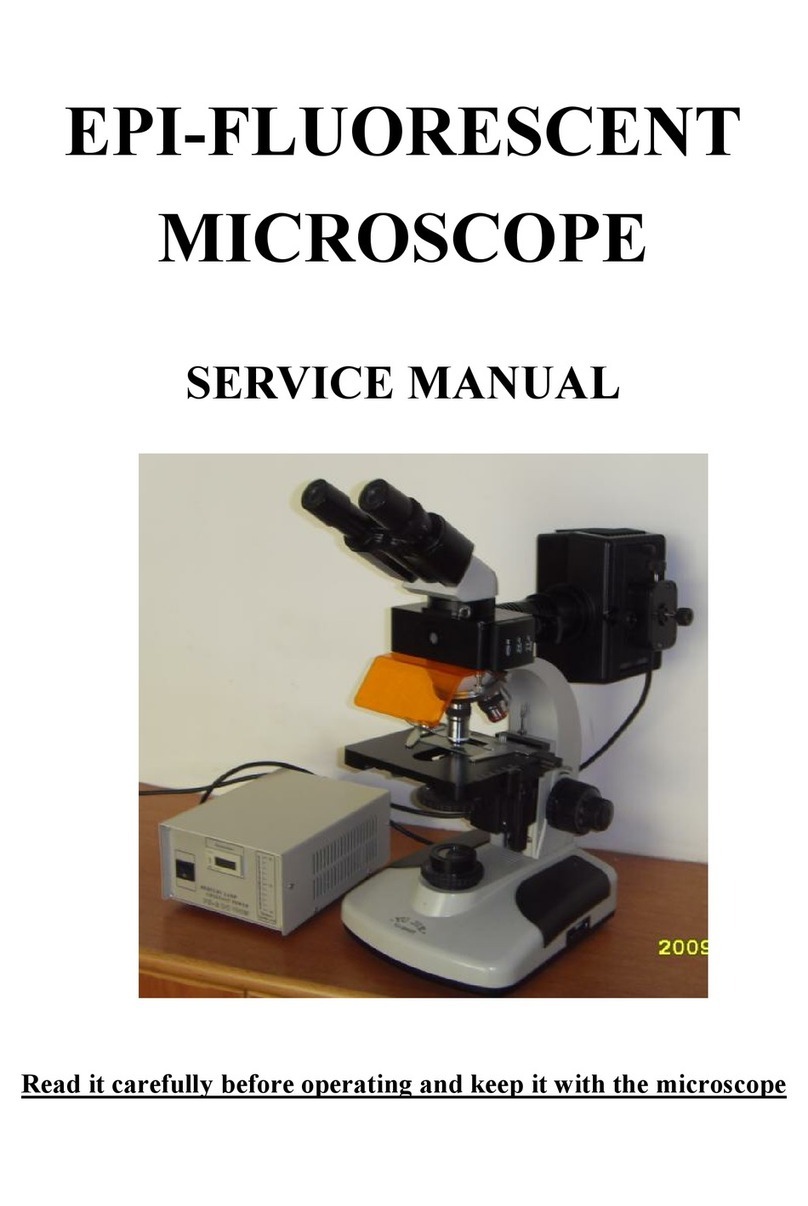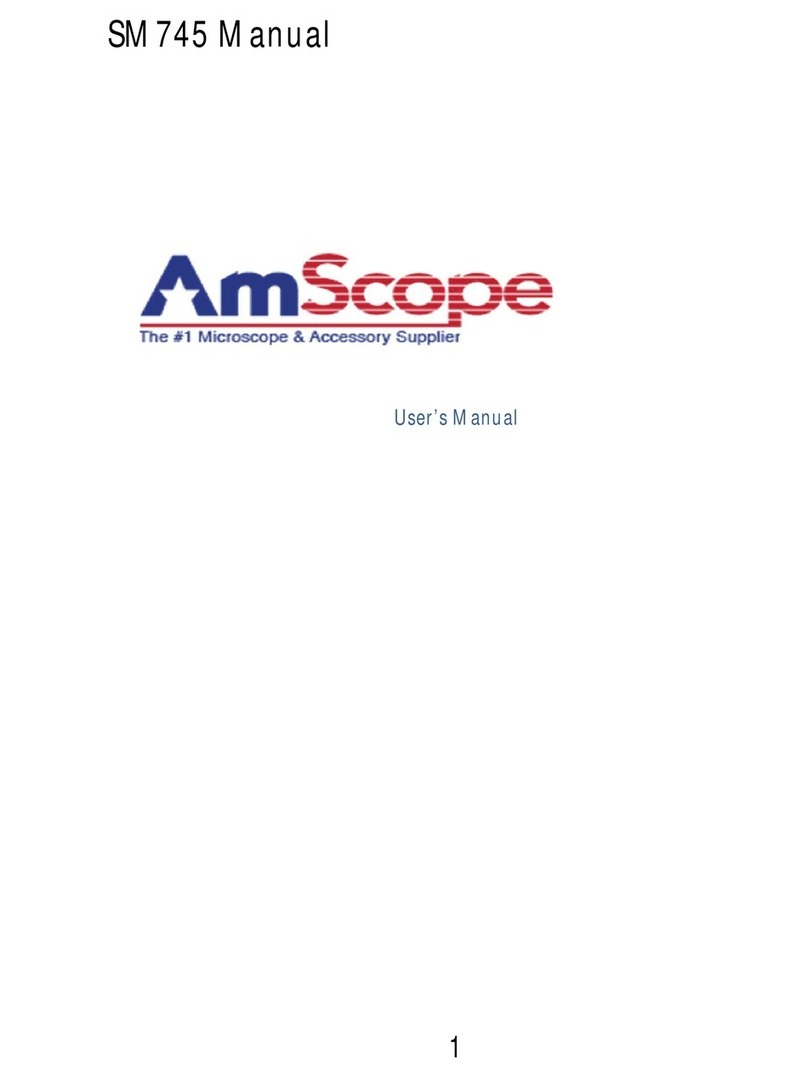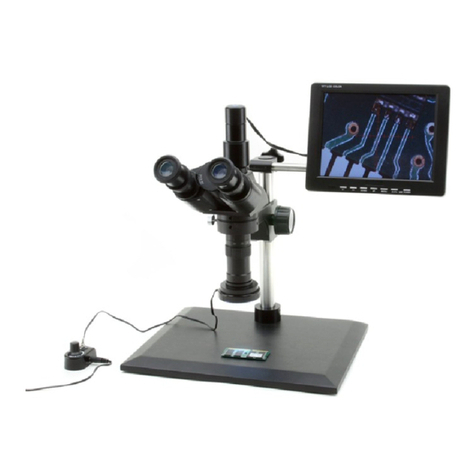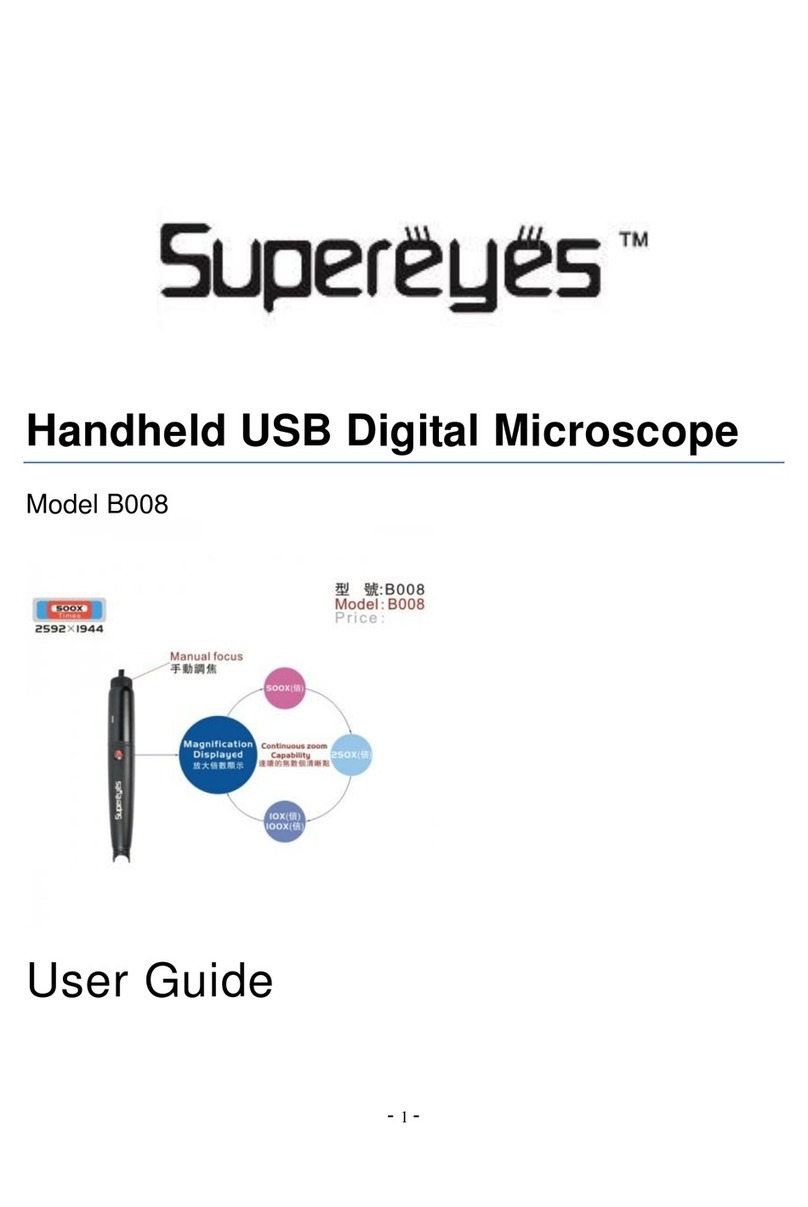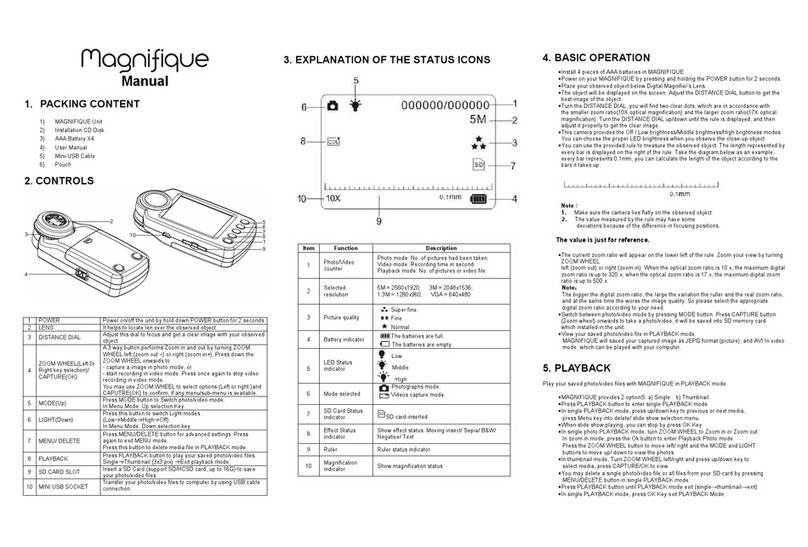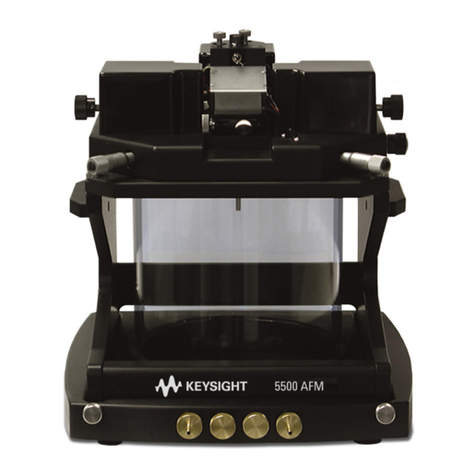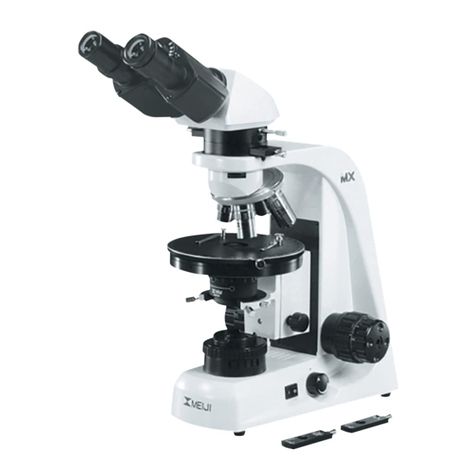Eli Ezer ESL-7800 User manual


Preface
Thank you for purchasing our ESL-7800 slit lamp. The slit lamp will have
another capability of photography, if you purchase the appliance with the
photography accessories. At the same time, in order to meet the needs of the customs,
we provide sorts of accessories, which can be used widely. Please read this manual
carefully for the sake of your best use.
General Requirements for Safety
Please read carefully about following precautions to avoid unexpected personal
injury as well as the product being damaged and other possible dangers.
Precautions
1.
Do not use this instrument in the environment prone to fire and blast or
where there is much dust and with high temperature. Use it in the room and
simultaneously be careful to keep it clean and dry.
2.
Check that all the wires are correctly and firmly connected before using.
Ensure that the instrument is well grounded.
3.
Please pay attention to all the ratings of the electrical connecting terminal.
4.
Only use fuse according to the specifications and rated values stipulated by
our product.
5.
Use the power cable supplied with this instrument.
6.
Don’t touch the surface of the lens and prism with hand or hard objects.
7.
Turn off the main power first before replacing the main bulb, flash lamp and
fuse.
8.
To prevent the instrument from falling down to floor, it should be placed on
the floor where the inclination angle is less than 10
°
.
9.
Turn off the power and cover the instrument with dust-prove hood when it is
not in use.
10.
In case there is any trouble, please first refer to the trouble-shooting guide. If
it still can’t work, please contact with the authorized distributor or our
Repair Department.
THE SAFETY MARKS USED IN THIS INSTRUMENT
TYPE B ATTENTION PLEASE TERMINAL OF
REFER TO THIS MANUAL THE PROTECTIVE GROUNDING

Fig.1

Contents
1 Nomenclature...........................................................................................................1
2 Assembly ..................................................................................................................3
2.1 Components.....................................................................................................3
2.2 Assembly procedure........................................................................................5
2.3 Checking procedure after assembling............................................................9
3 Operation procedures...........................................................................................10
3.1Diopter compensation and Pupil Distance adjustment...................................10
3.2 Patient position and fixation target ..............................................................11
3.3 Base operation..............................................................................................11
3.4 Operation illumination unit..........................................................................12
3.5 Fundus observation with Hruby lens (optional)...........................................14
4Maintenance.........................................................................................................15
4.1 Replacing the illumination bulb...................................................................15
4.2 Replacing the reflecting mirror....................................................................15
4.3 Replacing the fuse........................................................................................16
4.4 Replacing the chin-rest paper.......................................................................16
4.5 Adjusting the tightness of the slit width knob..............................................16
4.6 Adjusting the inclination of the illumination part........................................16
4.7 Cleaning ........................................................................................................17
4.8 Protecting .....................................................................................................17
4.9 Consumables................................................................................................19
5 Trouble shooting guide .........................................................................................20
6 Responsibility.........................................................................................................21
7 Transportation and storage..................................................................................21
8 Optional accessories (purchase in addition) .......................................................22
8.1Applanation tonometer...................................................................................19
9 Specifications .........................................................................................................22

1
1 Nomenclature
1 Joystick
Incline joystick to move the instrument slightly on the horizontal surface and
rotate it to adjust the elevation of the microscope.
2 Base Locking Screw
The base will be locked when fastening this screw.
3 Rail Cover
Protect the rail surface.
4 Base
Support the microscope and the illumination arms with the joystick controlling its
movement.
5 Work Table
6 Accessory Drawer
Store the focusing test rod and other accessories.
7 Brightness Control Switch
The brightness can be continuous adjusted. Avoid working continuously at high
setting, as the service life of the bulb will be shortened.
8 Main Power Switch
9 Pilot Lamp
10 Microscope Arm Locking Knob
Lock the rotational movement of the microscope arm.
11 Angle Mark Ring
Marks on the angle mark ring of the illumination arm, which relates to the long
mark of the microscope arm, represent the two arms’
angle.
When the ‘0’ on the
ring relates to the short mark at one side of the operator, the right eyepiece may
be
blocked,
and the side of the patient the left eyepiece.
12 Chin-rest Elevation Adjustment Knob
Rotate the knob to adjust the elevation of the chin-rest
13 Location Roller
When it is in the
middle,
it stands for included angle of 0
o
between the microscope
arm and the illumination arm. And the right or left side the included angle of 10
o
.
14 Microscope and Illumination Arm Couple Bolt
Fasten this bolt and the illumination arm and the microscope arm could rotate
together
in couple state
. Loosen it and the illumination arm then can rotate
sep
a
rately.
15 Hruby Lens Guide Plate
Also used as an assembly plate for the applanation tonometer.
16 Breath Shield
17 Chin-rest
18 Magnification Select Dial
Five different magnifications are provided.
19 Prism Box
Separate the prism box to adjust the interpupillar distance.
20 12.5X Eyepiece
Before using the slit lamp, adjust the proper diopter for each eyepiece to obtain a

2
definite image.
21 Microscope Fixation Screw
22 Accessories Mount
Accept the model R-900 Goldmann applanation tonometer as well as other
accessories
23 Horizontal Mark
When the horizontal center of the patient’s eye is in line with this mark, the
elevation of the microscope controlled by joystick is also in its center position.
24 Forehead Belt
25 Diffusion Lens
Used for observing and photographing at a low magnification, and for enlarging
the illumination field.
26 Lamp Cap
27 Aperture Slit Height and Display Window
28 Filter Selection Lever
There are four filters for selection
29 Aperture and Slit Height Control Knob
Rotate this knob to adjust the spot and the slit height. Swing the knob
horizontally to revolve the slit.
30 Fixation target
Two kinds of fixation targets are available. One is for diopter adjustment to help
the patient to see the target clearly while the other is an illuminated fixed spot.
31 Reflecting Mirror
Both long and short reflecting mirrors are provided. The long mirror is routinely
used for most examination procedures. The short mirror is used when the long
mirror interferes with the observation pathway, such as during funduscopy.
32 Hruby Lens
Used for observation of fundus and the posterior segment of vitreous body.
33 Hruby Lens Holder
34 Centering Knob
Loosening the knob allows the illumination light to be moved from the center of
the vision field for indirect retro-illumination. Fastening the knob brings the
illumination light back to the center.
35 Slit Width Control Knob
The slit width is continuously adjustable within the range from 0 to 9mm. The
marks on the left knob stand for the approximate value of the width.
36 Illumination Inclination Lever
Four 5
o
inclination stops are available-up to 20
o
.
37 Brightness Control Connector

3
2 Assembly
This section of the manual describes how to assemble
ESL-7800
slit lamp. All
parts should be taken out with great care from the packing case before
assembling.
2.1 Components
Fig2-1

4
Fig.2-2
Name Quantity
A Illumination Part 1
B Converging Binocular Tubes and base part 1
C Head-rest Part 1
D Breath Shield 1
E Worktable with Power Box 1
F Rail Cover 2
G Input Power Cable 1
H Hruby Lens 1
*
I Hruby Lens Guide Plate 1
*
J Spare Illumination Bulb 1
K Chin-rest Paper 1
L Focusing Test Rod 1
M Protection Cap 2
N Dust-proof Cover 1
O Fixation Target 1
P Spare Long Reflecting Mirror 1
Q Spare Short Reflecting Mirror 1
R Brush 1
S Spare Fuse 2
T Cross Screw Driver with Wood Handle 1
U Watch Screw Driver 1
V Spanner 1
W
Hexagonal wrench 1
(*Optionally available in some region.)

5
2.2 Assembly procedure---------------------------------------------------------
Necessary tools are as follows:
Cross screwdriver with wood handle (U)
Watch screwdriver (V)
Spanner
(X)
1) Selecting Voltage and Fuse
Fig.3
Check the setting on the voltage
selector located on the bottom of the
power box (Fig3). If it doesn’t
match with the input voltage, slide it
to the proper position with watch
screw driver (V).
Open the fuse holder with screw
driver (U) and take out the fuse,
check and ensure that its rated value
is corresponding to the mains
voltage:
110V----------------------1A
220V--------------------0.5A
It has been set to 220V, 0.5A before
leaving our factory.
Attention: Set the input voltage
and frequency of the instrument
according to that of the mains.
2) Assembling the Worktable (F)
To attach the worktable on the
motorized instrument table, please
screw off four M8x20mm bolts with
spring washers with the spanner
(X).
Lift the worktable to aim its screw
hole at the assembly hole of the
instrument table.
Put down the worktable, with the
power panel facing the operator,
refasten the bolt securely with the
spanner (Fig.4).
Fig.4
3) Assembling the Head-rest Part (D
Fig.5
Remove the four screws attached to
the chin-rest connection board with
the screw driver (U).
Put two cables in the gap between
the headrest fixation plate and the
chin-rest connection board (Fig.5).
While ensuring they are not
clamped, retighten the previously
removed screws (Fig.6).
Fig.6

6
4) Assembling the base part (C) and
the rail covers (G)
Fig.7
Place the wheels of both sides of the
base (C) on the rails on the
worktable (Fig.7).
Check whether the wheels can be
rolled steadily on the rails.
Insert the bottom of the rail covers into
the gap below the both sides of the rails
respectively in the direction of the arrow
(Fig.7).
5) Assembling illumination part (A)
Loosen the illumination arm couple
bolt (14).
Rotate the brass shaft sleeve so that
the red mark is 30 to 90 degree
from the limiting board (Fig.8).
Fig.8
Loosen the setscrews in the
illumination arm with the
screwdriver (V). Aim the assembly
hole of the illumination arm at the
brass shaft sleeve with care then put
down, let the shaft keeping close to
the bottom surface well and
simultaneously the two red marks
stretch in one line (Fig.9).
After the two red marks accurately
aligned, retighten the setscrews
(Fig.9).
Fig.9
6) Assembling the Converging
Binocular Tubes (B)
Match the groove on the binocular
tubes with the pin on the microscope
body. (Fig.10)
Fig.10
Fasten the fixing screw on the body
to the microscope.
Attention: Avoid touching any
lens surface.
7) Assembling the breath shield (E)
Remove the breath shield fixation
screw from the microscope arm.
Pass the removed screw through the
hole of the breath shield then
re-screw it into the arm (Fig.11).

7
Fig11
8)
Removing the illumination part
shipping pad
This pad is used to protect the slit
mechanism of the illumination part
during shipping.
Remove the rubber band and gently
pull the pad out (Fig.12).
Fig.12
9)
Connecting plug
Fig.13
Insert the plug on the top of the
headrest part (D) into the socket of
the lamp cap (26) on the
illumination part (A) (Fig.13).
Connect the two plugs below the
headrest part with the corresponding
output socket of the power box.
Insert the plug of the input power
cable (H) into the input socket of the
power box. .
Remove the cable clips from the
bottom of the work table with screw
driver (U) and wrap the output and
input cables respectively, then
reattach them to the bottom of the
work table. (Fig14).
Fig.14
10) Assembling the Hruby lens (I) and
theHrubylensguideplate(J)
Insert the Hruby lens (I) into the
Hruby lens holder (35) on the
headrest part. Be careful not to
touch the lens surface (Fig15.).
Fig.15
Place the Hruby lens guide plate (J)
into the main shaft hole of the base
part with the small end pointing to
the headrest part (Fig16).

8
11) Assembling the chin-rest paper (L)
Fig.16
Pull out the two fixing pins from the
chin-rest.
Get rid of the paper package and let
the pins go through its holes.
Insert the fixing pins into the hole
again (Fig.17).
12) Placing spare parts
Some spare parts could be stored in
the accessory drawer (6) (Fig.18).
Fig.17
Fig.18
2.3
Checking procedure after assembling-------------------------------------
1) Power plug
This instrument supplies a 3-wire cable.
Please select a proper power socket as
matched.
Ensurethattheinstrumentisgroundedwell.
Attention: Please use the special
cable supplied with this
instrument.
2) Thepowerboxandtheilluminationpart
When the main power switch (8) of
the power box is placed at ‘I’, it turns
on, and ‘O’ for turn off. The main
power switch should be set at the ‘O’
position before connecting the input
cable with the power socket.
Turn on the main power switch,
and the pilot lamp (9) will be
lighted. Open the slit width
control knob (35) to examine the
illumination.
Rotate the brightness control
switch (7) respectively at three
positions and the brightness
should be changed accordingly.
Check the fixation target device
to confirm it is lighted.
Check whether all those
moveable parts such as aperture
and slit height control knob (29),
filter selection lever (28), and
magnification changer lever (18)
etc. could be operated freely.
After examining, turn off the
main power and cover the
instrument with the dust-proof
cover (O).

9
3 Operation procedures
3.1Diopter compensation and Pupil Distance adjustment-------------------
1)
1)1)
1) Use of the focusing text rod (M)
Fig.19
The rod is supplied as one of
standard accessories for confirming
the microscope’s accurate
adjustment. Insert it into the main
shaft hole with the flat surface facing
the objective lens the direction of the
operator (Fig.19).
Attention: After adjusting,
remember to take out the rod.
2) Brightness adjustment
Switch on the main power switch
and set the brightness control switch
(7) at ‘N’ position. Turn the slit
width control knob (35) to make the
slit width to be 2~3mm.
3) Diopter compensation
The focus of the microscope is
calibrated according to the
emmetropia. If the operator is an
ametropia, he should adjust the
eyepiece diopter. One eyepiece
with four short reticle lines witch is
usually placed at the right side
helps to focus accurately after
accessories being attached.
Fig.20
Suggest adjusting the diopter as
following procedures
First, rotate the diopter
adjustment ring (19) counter
clockwise down to the end.
(Fig.20).
Second, rotate the ring
clockwise until a sharp slit
image appears on the
focusing text rod.. At this
time, it is also the clearest
observation of the reticule in
the eyepiece
Adjust another eyepiece in
the same procedure.
Record the diopter value on
each eyepiece for future
reference.
4) Interpupillary distance
adjustment
Separate the prism box of the
microscope with both hands
to adjust the P.D. until both
eyes could see the same
image on the focusing test
rod through the eyepieces,
and at the same time a
stereovision will be obtained.

10
3.2 Patient position and fixation target-----------------------------------------
1) Positioning the patient’s head
Have the patient place his chin on
the chin-rest (17) and the forehead
against the forehead-rest belt (24).
Adjust the chin-rest elevation
adjustment knob (12) below the
chin-rest until the patient’s canthus
aligns with the horizontal mark (23)
(Fig.21).
Fig.21
2) Use of the fixation target
For fixing the patient’s eyesight, just
make him look at the fixation target
(30) with the eye not to be examined.
To change fixing position, move the
lamp bar, as well as move the curved
lever around the forehead.
The fixation target with diopter
compensation supplies a dot and
concentric circles target. Slide the
knob to adjust the diopter
compensation within the range from
-15D to +10D (Fig.22).
Fig.22
The fixation target with spot light is
especially for the patient whose
diopter exceeds -15D (Fig.23).
When changing, just loosen the
fixation screw, replace the fixation
target with the spot light source and
refasten the fixation screw.
Fig.23
3.3 Base operation ------------------------------------------------------------------
1) Horizontal rough adjustment
Keep the joystick (1) erect and move
the base (4) to make the microscope
move on the horizontal surface to
aim at the object roughly. (Fig.24).
2) Vertical adjustment
Rotate the joystick to adjust the
microscope’s height until it aligns
with the target. Turn the joystick
clockwise to raise the microscope
and counter clockwise to lower it.
3) Horizontal Fine adjustment
Tilt the joystick to make the
microscope move slightly on the
horizontal surface. While watching

11
through the eyepieces, tilt the
joystick to aim accurately at the
object for a sharp image.
4) Locking the base
When finishing the adjustment,
fasten the base locking screw (2) to
lock the base (4) and prevent it from
sliding.
Fig.24
3.4 Operation illumination unit-------------------------------------------------
1) Changing the slit width
Turn the slit width control knob (35)
and the slit width will be changed
from 0mm to 9mm. The slit
becomes a circle at the 9mm size.
The scale on the knob indicates the
width value approximately (Fig.25).
Fig.25
2) Changing the aperture and slit
height
Turn the aperture and slit height
control knob (29) and 6 different
circular beams of light are available
at full aperture: 9, 8, 5, 3, 1, 0.2 dia
respectively. With a slit image, the
slit height can be changed
continuously from 1 to 9mm, which
is indicated through the display
window (27) (Fig.26).
3) Rotating the slit image
Swing the aperture and slit height
control knob (29) horizontally to
revolve the slit image at any angle
in the vertical or horizontal
direction. The rotation angle scale
indicates the angle of image rotation
with small division for 5
o
and big
division for 10
o
(Fig.27)
.
Fig.26
Fig.27
4) Deflecting the illumination light
Loosen the centering knob (34) and
swing the slit width control knob
(35)
back and forth so the light spot
moves away from the center of the
microscope vision field. It is mainly
used to examine the eyes by indirect
retro-illumination. Fasten the

12
centering knob and the slit light will
return to the center of the
microscope vision field (Fig.28).
Fig.28
5) Oblique illumination
Oblique illumination is used for
sectional or fundus examination by
use of a contact lens. Press down
the inclination lever (36) so that the
illumination part may incline to 20
o
,
(5
o
of each division). Since the
illumination part may touch the
patient’s head, operate carefully
(Fig.29).
Fig.29
6) Reflecting mirror
Both short and long reflecting mirror
are available in this instrument. Use
the long mirror in normal
examination. When the angle
between the illumination part and
the microscope is within 3
o
to 10
o,
the examined image might be
obstructed. In this case, use the short
mirror. The short mirror is also used
when the illumination part is
inclined over 10
o
(Fig.30).
Fig.30
7) Filter selection
By shifting the filter selection lever
(28) four different filters can be
inserted into the illumination
pathway. Usually the heat
absorption filter is used for patient
comfort. (Fig.31).
Fig.31

13
3.5
Fundus observation with Hruby lens (optional)-------------------------
In routine applications, only the
anterior segment of the vitreous
body can be examined because of
the refraction effects of the cornea
and crystalline lens. However, with
the Hruby Lens, examination of the
vitreous body is possible.
Operation procedure:
1) The pupil should be dilated for
about 20 minutes.
2) Insert the Hruby lens guide plate
(15) into the main shaft hole of the
illumination and the microscope
arm.
3) Pull out the Hruby lens holder from
one side of the headrest as shown in
Fig.32. Move the Hruby lens holder
toward the operator so that it can
slide freely to the left and right
below the chin-rest. Insert the
lower end of Hruby lens lever into
the groove on the guide plate.
4) Move the focus of the illumination
light and the microscope to the
patient’s eye.
5) Move the lever to locate the Hruby
lens at the center of the vision field
and near the patient’s eye, as shown
in Fig.32.
6) Move the lever to focus the Hruby
lens at the fundus, and then adjust
the slit height and width to reduce
the unnecessary interference light in
the field-of-view.
7) To examine different parts, either
turn the microscope and the
illumination arm or change the
patient’s fixation by manipulating
the fixation target.
8) If the long mirror interference in the
examination, just replace it with the
short mirror.
9) After examination, move the Hruby
lens back to the original position on
one side of the chin-rest.
Attention: before moving the
Hruby lens to the right and left,
first have the patient’s head
move away from the chin-rest to
avoid his nose touching the
Hruby lens.
Fig.32

14
4 Maintenance
Attention: The replaced waste materials should be treated as industrial
rubbish.
4.1 Replacing the illumination bulb---------------------------------------------
Turn the main power switch (8) off.
Pull out the plug attached to the
lamp house, turn the lamp cap (26)
counter clockwise and remove it
from the illumination part (A)
(Fig.33).
Fig.33
Remove the old bulb and replace it
with a new one. The groove in the
bulb fixation disc should be aligned
with the flange of the lamp base;
otherwise the illumination may be
uneven (Fig.34.).
Attention: The bulb is hot
Place the lamp cap in the original
position and rotate it clockwise and
insert the connecting plugs.
Turn on the main power switch and
check whether the new bulb is
illuminated.
Fig.34
4.2 Replacing the reflecting mirror ---------------------------------------------
Set the angle between the
microscope and the illumination
arm to exceed 30
o
.
Incline the illumination arm by
more than 10
o
.
Remove the long mirror by holding
the extended surface (Fig.36).
Fig.35
Insert new long or short reflecting
mirror.
When replacing the short mirror,
just push the bottom of the mirror
by using an object with a sharp end
(Fig.36).
Fig.36

15
4.3
Replacing the fuse -------------------------------------------------------------
Turn off the main power switch (8)
and remove the power cable from
the outlet.
With the screw driver (U), turn the
center of the fuse holder (Fig.37).
Replace it with a new fuse, and then
tighten the fuse holder.
The fuse specifications and rated
values are as follows:
110V 1A / 125V
220V 0.5A/ 250V
Attention: Please select the fuse of the
sametype,specificationandratevalue.
Fig.37
4.4 Replacing the chin-rest paper ------------------------------------------------
When the paper is depleted, pull
upward two fixing pins of the
chin-rest and place a new package of
paper, then fix the fixing pins again.
(Fig.38).
Fig.38
4.5
Adjusting the tightness of the slit width knob ---------------------------
If the slit width control knob is too
loose, the slit width may be out of
control. Rotate the screw clock-wise
on the right knob to adjust its
tightness with the screw driver (V),
When it is appropriate, stop doing it.
(Fig.39).
Fig.39
4.6
Adjusting the inclination of the illumination part ----------------------
If the inclination mechanism of the
illumination part is too loose,
fasten the screws on both sides of
the pivot point with the screw
driver (U) (Fig. 40).
Fig.40

16
4.7 Cleaning --------------------------------------------------------------------------
1)
Cleaning the lens and mirror
If any dust stick on the lenses or
reflecting mirrors, brush them with
the brush (S) supplied in the
standard accessories. In case any
dust still remains, wipe it off with
soft cotton dipped with absolute
alcohol.
Attention: Never scratch with
fingers or any other hard
materials.
2) Cleaningtheslideplate,railsandshaft
If the slide plate, rails and shaft are
dirty, the vertical and horizontal
movement will be unsteady. Wipe
them with clean soft cloth. (Fig.41)
3) Cleaning and sterilizing the
plastic parts
Clean the plastic parts such as
chin-rest bracket, forehead-rest belt
with soft cloth dipped with soluble
detergent or water, sterilize with
medicinal alcohol.
Fig.41
Attention: Don’t wipe with any
corrosive detergent lest that the
surfaceshouldbedamaged.
4.8 Protecting------------------------------------------------------------------------
Fig.42
There always are dusts and
physiological salt solution dropping
into the main shaft hole of the
illumination arm during the
operation. Please cover the main
shaft hole with the protection cap
lest that the instrument would be
damaged. Take off the cap when the
guide plate needs to be assembled
(Fig.42).
4.9
Consumables--------------------------------------------------------------------
Please specify names and quantities when ordering following consumables
.
Part name Outlook
ESL-7800
Illumination bulb
Slit
Long reflecting mirror
Lamp Chin-rest paper
Fuse 1A (110V)
0.5A (220V)
Table of contents
